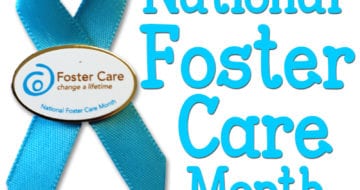A growing body of research on brain development has shown that the boundary between adolescence and adulthood is not a fixed point, but can extend well into an individual’s twenties. And 18- to 24-year-olds—also referred to as young adults — stand out as a distinct developmental group with heightened impulsive behavior, risk taking, and poor decision-making.
In light of this emerging research, some states have adjusted policies and practices to be more responsive to young adults’ needs. Many states, for example, now allow young people to remain in foster care up to age 21. And Connecticut Governor Dannel Malloy recently announced plans to explore raising the age of juvenile court jurisdiction through age 20.
During the developmental stage of young adulthood, many young adults are disconnected from systems and services designed to ensure their successful transition to adulthood. For example, we know that many young adults ages 18 to 24 are not connected to education and employment. In 2013, approximately 1 in 5 young adults (the majority of whom were black or Latino) were out of school and out of work.
These factors increase the odds that a young adult might come into contact with the justice system. National data show that more severe crimes, including major violence, robbery, and weapons offenses peak during the young adult years, and that young adults are disproportionately likely to be repeat offenders. For example, while young adults comprised approximately 10 percent of the U.S. population in 2013, they accounted for nearly 40 percent of those persons arrested for robbery and 33 percent of those arrested for weapon possession. And one study found that more than three-quarters of people who were under the age of 25 when released from prison were rearrested within three years, and 84 percent were arrested within five years.
These alarming statistics have caught the attention of policymakers and practitioners alike, and there has been a growing emphasis on connecting young adults involved in the justice system to the appropriate systems and services that can address their distinct needs. And, because neither the juvenile nor the adult criminal justice system is exclusively responsible for providing services and supervision to young adults, both these systems have a vested interest in improving outcomes for this population. In September, the U.S. Department of Justice hosted a panel discussion focused on young adults involved in the justice system, and released a report focused on community-based responses to justice-involved young adults.
The Council of State Governments (CSG) Justice Center also recently released an issue brief, Reducing Recidivism and Improving Other Outcomes for Young Adults in the Juvenile and Adult Criminal Justice Systems, which highlights the distinct needs of young adults under justice system supervision, and cites several challenges to ensuring young adults transition to a crime-free and productive adulthood:
- First, many juvenile and criminal justice systems are not tailoring services and supervision to meet the distinct developmental needs of young adults, and this is often due to a lack of programs and strategies that have proven effective in reducing recidivism and improving other outcomes;
- Service systems designed to support young adults under justice system supervision, such as the education and healthcare systems, are often not aligned with one another;
- State policies can impose collateral consequences for young adults with criminal records that make it difficult for them to transition to independence; and
- Few states are tracking data on recidivism and other outcomes specifically for young adults, making it difficult to determine whether interventions are effective.
The lack of well-tested approaches for improving outcomes for young adults in the justice system presents an opportunity to draw on lessons learned from other systems and initiatives. For example:
- Momentum has been building to improve outcomes for “opportunity youth”— defined as young people between the ages 16–24 who are disconnected from school and work—with initiatives from the White House and other nonprofit and philanthropic organizations that recognize the importance of getting this population back on track. Promising approaches and lessons learned through these initiatives can help inform a model for young adults involved in the justice system.
- The child welfare system has been working for years to support permanency planning and help young adults successfully transition to independence. Depending on the U.S. state, young adults may be between the ages of 18 to 21 when they formally transition out of foster care. Therefore, opportunities exist to adapt policies and practices from the child welfare system to help ensure young adults under justice system supervision transition to a successful adulthood.
Leveraging lessons learned by other service systems, along with improving cross-system collaboration, enhancing data collection and use, and testing promising and innovative service approaches will help state policymakers, agency leaders, researchers, and the field advance policies and practices to help young adults under justice system supervision transition to a crime-free and productive life.
Emily Morgan is Senior Policy Analyst, School Discipline at the Council of State Governments Justice Center.




